Switzerland’s many beautiful lakes make it one of the best places in Europe to enjoy Stand Up Paddle (SUP). Calm morning water, breathtaking mountain views and easy access to the shore make SUP the perfect way to connect with nature — whether you’re a first-timer or a seasoned paddler.
At All Winds Adventures, we’ve watched SUP evolve from a surfside curiosity to one of the most accessible water sports around.
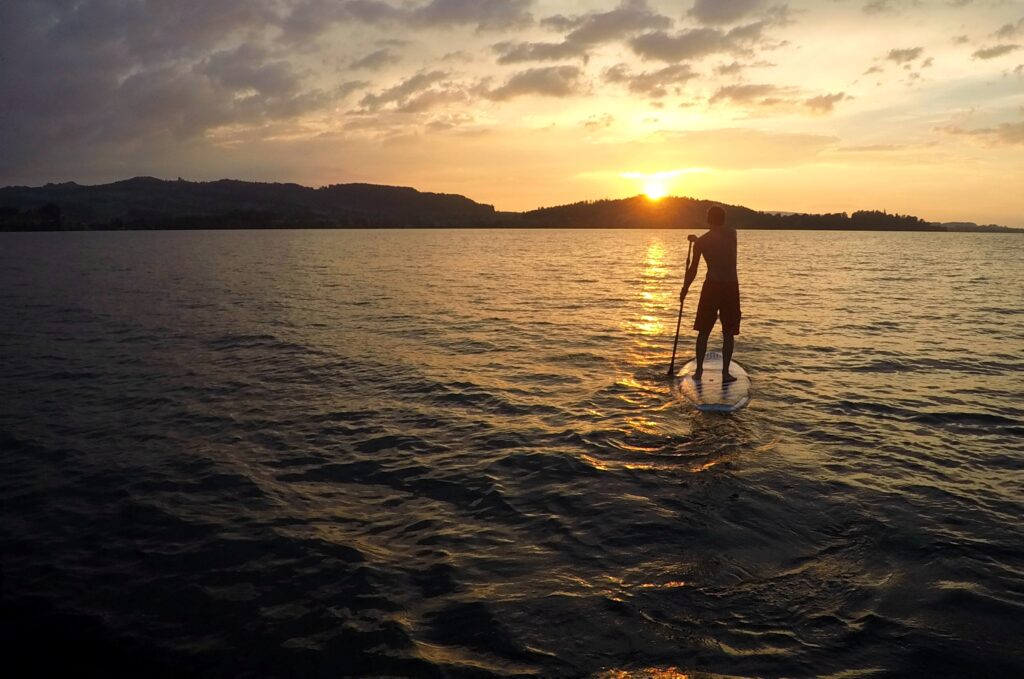
My SUP Story – From Waves to Lakes
I first stood on a SUP board back in the early 2000s when it was emerging as a new way to ride waves. At that time, I thought it was great for catching mellow surf, but I couldn’t imagine why anyone would want to paddle it on flat water.
Fast forward ten years, and I found myself eating my words. Looking for a way to spend more time on the water when there wasn’t enough wind to windsurf, I started exploring Swiss lakes on a SUP.
Standing gives you a better view than sitting in a kayak, you use more muscles to balance, and with today’s inflatable SUP boards, storage and transport are easy — pump up in 5–10 minutes and you’re ready to go.
Now, I enjoy SUPing on flat water even more than I ever expected when I first tried it all those years ago.
SUP Regulations in Switzerland
Before heading out, make sure you know the rules and safety regulations for Stand Up Paddle in Switzerland. Here are the key points every paddler should remember:
- 🚫 Stay out of swimming zones: Inside the yellow buoys is for swimmers only. Entering with a board can result in fines.
- ⚓ Avoid harbours, marina entrances, and ferry landings: These areas are reserved for motorboats and passenger vessels.
- 🦺 Wear a buoyancy aid when paddling more than 300 m from shore. It’s legally required — and safer.
- 💡 Carry a white light after sunset that can be seen from all directions.
- 🌾 Keep 25 m distance from reed-covered shorelines to protect wildlife habitats.
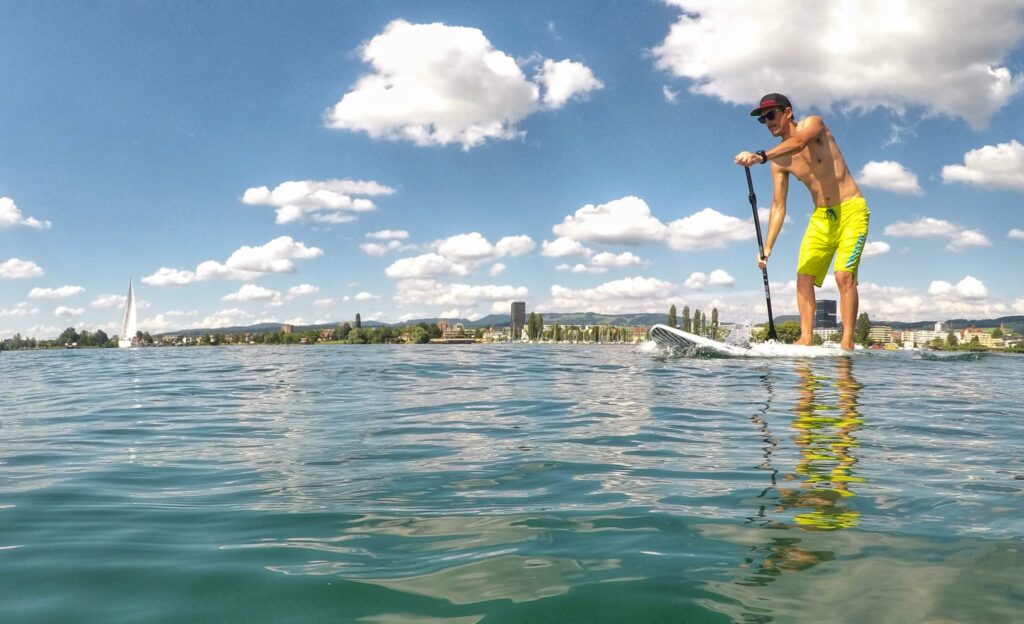
SUP Safety Tips
Stand Up Paddleboarding is one of the safest water sports — but a little common sense goes a long way:
- Always wear a leash. Your board is your best flotation device. Losing it in wind or current can mean a long, tiring swim.
- Dress for the conditions. Cold water? Wear a wetsuit or drysuit.
- Learn recovery skills. Practice getting back on your board in chest-deep water before heading far from shore.
- Avoid offshore winds. If the wind blows from land to lake, it will push you away quickly. Return early if it starts to strengthen.
- Supervise children and check your inflatable board for leaks before launching.
- Use the correct leash type on rivers.
- Take a lesson if you’re new to SUP. You’ll gain technique and safety awareness that make the experience far more enjoyable.
At All Winds Adventures, we offer private coaching — perfect for beginners or anyone wanting to improve confidence and technique.
Choosing the Right SUP Board
Inflatable
Inflatable boards are ideal for Swiss conditions — easy to store, lightweight, and portable by car or train.
Performance is slightly less than hard boards, but for recreational paddling that’s a fair trade-off.
Typical inflatable SUP sizes:
- 10’6″ All-round boards: Very stable, ideal for beginners and casual paddling.
- 11’6″ Touring boards: Slightly faster and track straighter — great for longer outings or carrying a drybag.
- 12’6″ Touring/Race style: Narrower, faster, but less stable. Best for intermediate paddlers.
- 14′ Performance boards: Designed for distance and efficiency, but less manoeuvrable.
For most paddlers, an 11’6″ inflatable SUP offers the best balance of stability and glide.
Hard Boards
Hard boards deliver more performance and efficiency, especially for long distances or waves, but they take up more storage space and are harder to transport.
- Race boards (≈14 ft): Fast but narrow and less stable — ideal for fitness paddlers.
- Wave SUPs (7’10″–10’): Short, manoeuvrable, and designed for surf. On lakes, they’re less efficient but fun if you want crossover use for travel.
If you’re choosing one hard board to use both on Swiss lakes and in small surf, aim for 8’6″–10’ length and 130 L+ volume.
Summary
Stand Up Paddleboarding is a fantastic way to explore the lakes of Switzerland, stay fit, and enjoy nature from a new perspective.
With the right board and basic safety awareness, almost anyone can do it.
Inflatable SUPs offer portability and great value, while hard boards bring performance and speed.
Whatever you choose, the key is simply to get on the water — and start paddling.
At All Winds Adventures, we offer:
🛍️ SUP Equipment Sales — from trusted brands like Naish, STX, North, Slingshot & Mystic
🏄♂️ SUP Coaching & Taster Sessions — learn with professional guidance
🏖️ SUP Rentals — take a board for a weekend or your holiday
Feel free to contact us if you would like any further information regarding Stand Up Paddle in Switzerland.
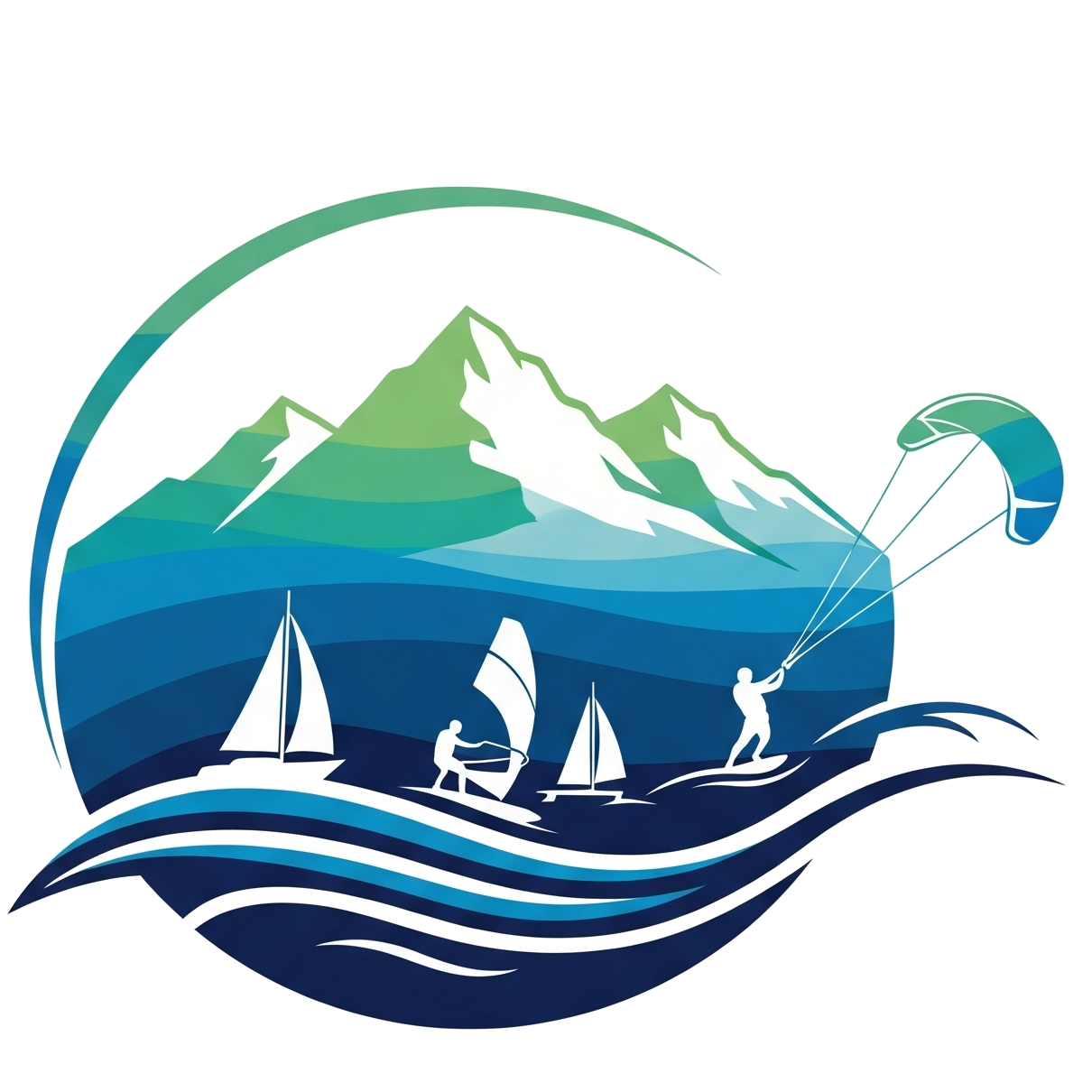
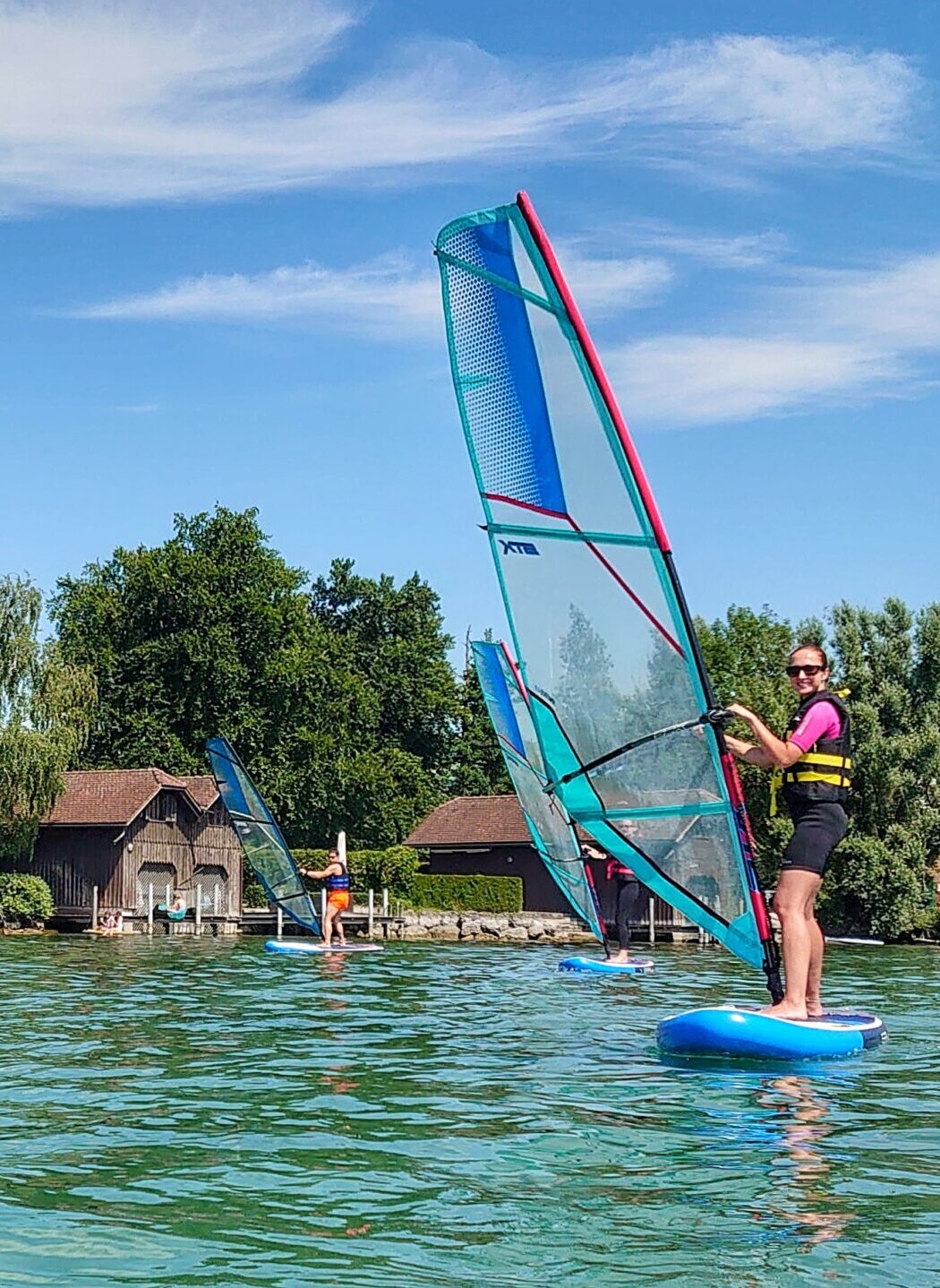
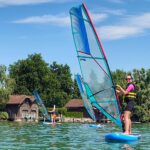
4 Responses
Very very useful information thanks!
Do you have any idea if electric SUPs are allowed?
I think they are so rare at the moment they probably don’t even know what they are. Worst case is they might try to take it under the motorboat laws which means the SUP would have to be registered, but I would be surprised that you would get a problem unlsess you are going at silly speeds amongst other water users.
Thank you so much for so many useful information! What a great article. 🙂
I wanted to ask in regards to the buoyancy aid for 300m+ off shore – do you need to wear it or just having it with you on the paddleboard is enough?
I have a yoga paddleboard and I really like the idea of doing some yoga in a middle of a lake. The board leash I can imagine to be able to work around but the buoyancy vest could prove quite cumbersome. So I wondered if it has to be legally worn or just having in ‘on board’ is enough?
Thank you so much in advance!
This article was so useful! Thank you very much! I wanted to ask in regards to the buoyancy aid in 300m+ off shore – do you have to wear it or does it just have to be on the board? (Attached to the straps for example?)
I have a yoga board and I really enjoy the idea of doing yoga in a middle of a lake, which can prove quite difficult with the buoyancy vest on. So I wondered if the legal rule is to have it ‘on board’ or strictly wearing it?
Thank you in advance!